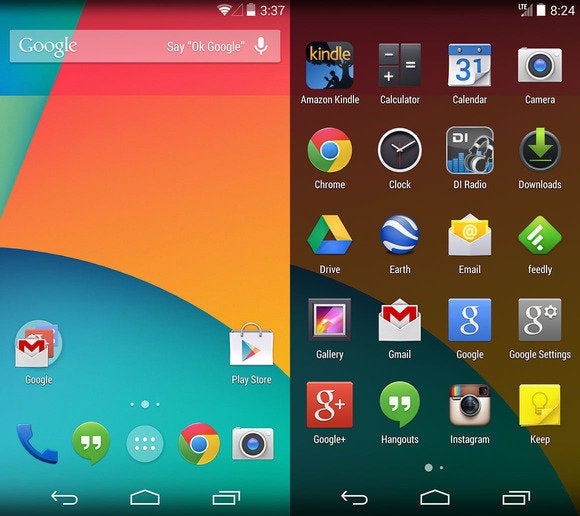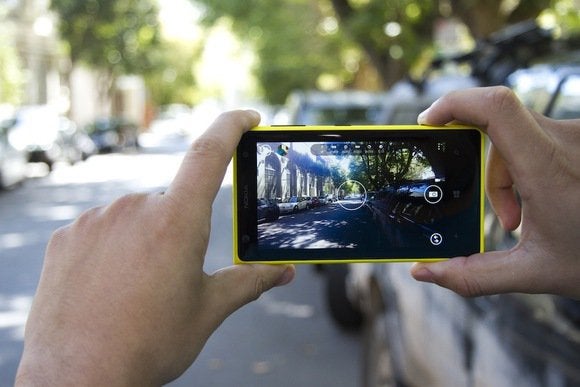Few tools of modern technology have become as prevalent as the cell phone, which allows you to be in touch from almost anywhere, almost all the time. And you can do more than just talk: Today's phones let you send and receive email and text messages, surf the Web, and play music and videos. Sifting through the sea of service plans and handsets can be difficult, but we'll walk you through what you need to know to get the phone and the service plan that are right for you.
When considering a new smartphone, whether it’s the newest iPhone, an Androidsuperphone, or a business-friendly Windows Phone, it pays do a bit of research before you hit the stores so that you'll know exactly what to look for.
Features to Consider
When you're shopping for a phone, you can do some simple hands-on tests in the store to ensure that the handset has everything you need.
Call quality: What good is a phone if it can't make calls? Some of the simplest, most bare-bones feature phones offer the best call quality, and some fancy smartphones offer dismal calling. When evaluating phones, be sure to make a few test calls. In our hands-on tests, we generally place some calls from a quiet room and several others in a noisy environment. You might not be able to replicate such tests indoors, but try your best. Listen for static, tinny voices, and interference. Ask the people you call if they can hear a disruptive amount of background noise.
Design: Your choices range from phones that are easily pocketable to large-screened behemoths that are more like tablets than phones. Whichever type of phone you select, check to see if it's comfortable to hold against your ear, if you can hear callers without constant adjustment, if you can use the phone with one hand (or by scrunching your neck and shoulder), if it fits comfortably in your pocket or bag, and if it's durable enough to handle some rough treatment. A solidly built phone should be able to withstand getting banged around in a handbag or pocket, as well as a bit of moisture and a short-range drop. You should consider investing in a case or display protector as well—especially if you’re somewhat accident-prone.
Operating system: If you're looking to do more than make calls and send text messages with your phone, consider the platform that it runs on. The mobile operating system you choose will greatly affect your phone's capabilities. The most popular platforms are Google's Android (found on multiple devices), iOS (found only on iPhone models), and Microsoft’s Windows Phone. Each operating system has its own advantages and disadvantages, so familiarize yourself with all of them before settling on one.
Read our picks for the Top Android Smartphones
Display: If you intend do a lot of Web browsing or movie streaming, make sure that the screen is big enough for you to take full advantage of the phone's features. For surfing the Web or editing Office documents on your phone, a screen that measures less than 4 inches diagonally will feel cramped.
Screen resolution: The higher the resolution, the better the screen will look—an important factor if you plan to watch videos or view photos on your phone. A high-resolution display is desirable if you plan to do a lot of reading on your phone, since text will look much sharper on it and be easier to read.
If your phone lets you adjust contrast and brightness (including backlighting), you can make text and graphics easier to view in well-lit places, and you can also save battery life in a pinch.
4G support and availability: 4G networks offer data speeds that are vastly superior to those available on a 3G network. You can expect to see average download speeds of around 6 to 9 megabits per second while connected to a 4G network—though of course those speeds vary depending on your location and on reception quality. You'll encounter two kinds of 4G networks when buying a new phone: LTE and HSPA+. Verizon, Sprint, T-Mobile and AT&T all have their own LTE networks, with T-Mobile and AT&T defaulting to HSPA+ when LTE coverage isn't available.
4G is pretty much the norm on smartphones these days, and you'll definitely want it on your next phone. Normally, connecting to a 4G network costs nothing extra, though the faster data speeds do mean that you can quickly hit your data cap if you aren't careful. Carriers are constantly expanding their 4G networks; but if you're leaning toward choosing a 4G-capable phone, check the relevant carrier coverage maps to confirm that your region already has 4G service.
Cameras: If you expect to take a lot of photos with your phone, you'll want to pay attention to the phone's camera specs. For mid- to high-level smartphones, 8 megapixels is now pretty much the standard. However, a higher megapixel count doesn't necessarily mean a better camera. Verify that the phone camera you're interested in has a flash (dual-LED or Xenon flashes work best); otherwise, pictures you take indoors or at night will come out looking like blurry messes. Try to take a few pictures in the store to get a clear idea of the camera's photo quality.
Most cell phone cameras also video-capture capabilities, and most midrange and high-end phones can capture high-definition 720p or 1080p video. If video is your thing, make sure that the OS provides an easy way to upload your videos to services such as Facebook and YouTube.
Pretty much every smartphone these days has a front-facing camera. These are mostly good for making video calls and taking selfies, but generally aren't as important as the camera on the back of the phone. If you plan on making a lot of video calls on your phone (or just like taking pictures of yourself), then you'll want a high-megapixel front-facing camera or one with HD video capabilities.
Processor: Much like 4G, quad-core processors are quickly becoming the standard in phones. You can still purchase and run most phones just fine on a dual-core processor—but going forward, most phones will have four or possibly even more cores. As time goes on, having a phone with a dual-core processor may limit the types of applications you can run on your phone, and the types of updates it can receive.
Battery life: There’s no easy way to predict how long a phone’s battery will last. In our lab tests and hands-on evaluations, LTE phones have generally supported shorter battery lives than 3G phones have. Ultimately, however, it all depends on how much you use your phone. If you're always on your phone, browsing the Web and making calls, your phone probably won't make it through a full day before needing to recharge. If you aren't always near an open outlet, you can buy a case with a built-in wireless charger, or you can carry around an extra battery for your phone. For a complete guide to extending your phone’s battery life, check out our article on how to optimize your gadget's battery life.



No comments:
Post a Comment